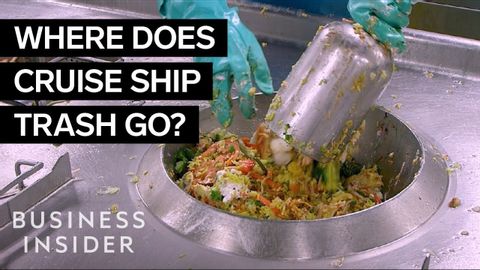世界上最大的郵輪是怎麼處理垃圾的?(How Waste Is Dealt With On The World's Largest Cruise Ship)
joey joey 發佈於 2021 年 11 月 27 日  沒有此條件下的單字
沒有此條件下的單字- adj.巨大的;大而重的;大量的;厚重的;大規模的
US /ˈprɑsˌɛs, ˈproˌsɛs/
・
UK /prə'ses/
- v.t.用電腦處理(資料);(依照規定程序)處理;處理;流程;加工;理解
- n. (c./u.)(規定的)程序;過程;進程;方法;法律程序;進程
- n.迷戀
- v.t.壓碎;擊敗(某人或事);擠:使變形;羞辱
